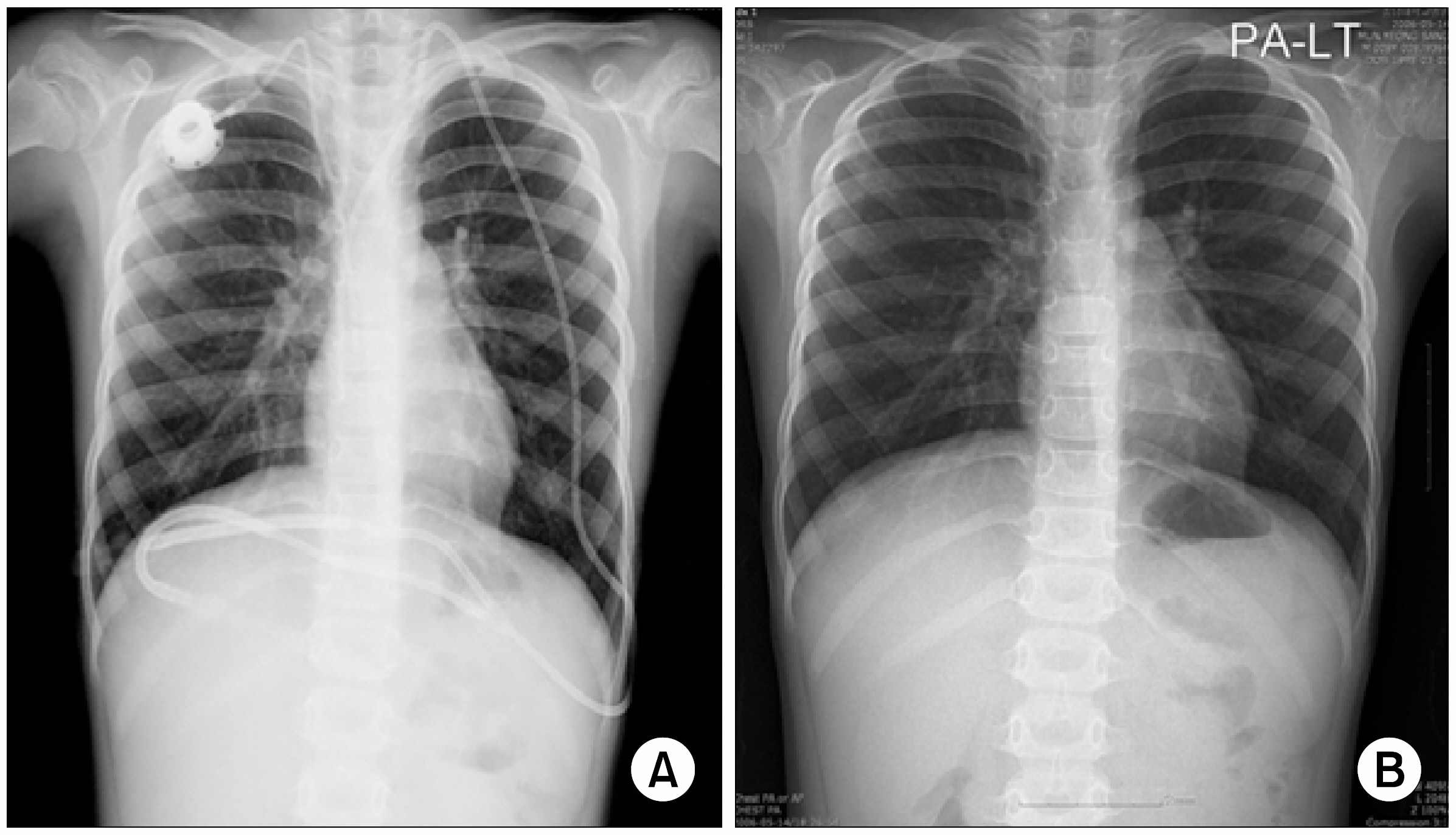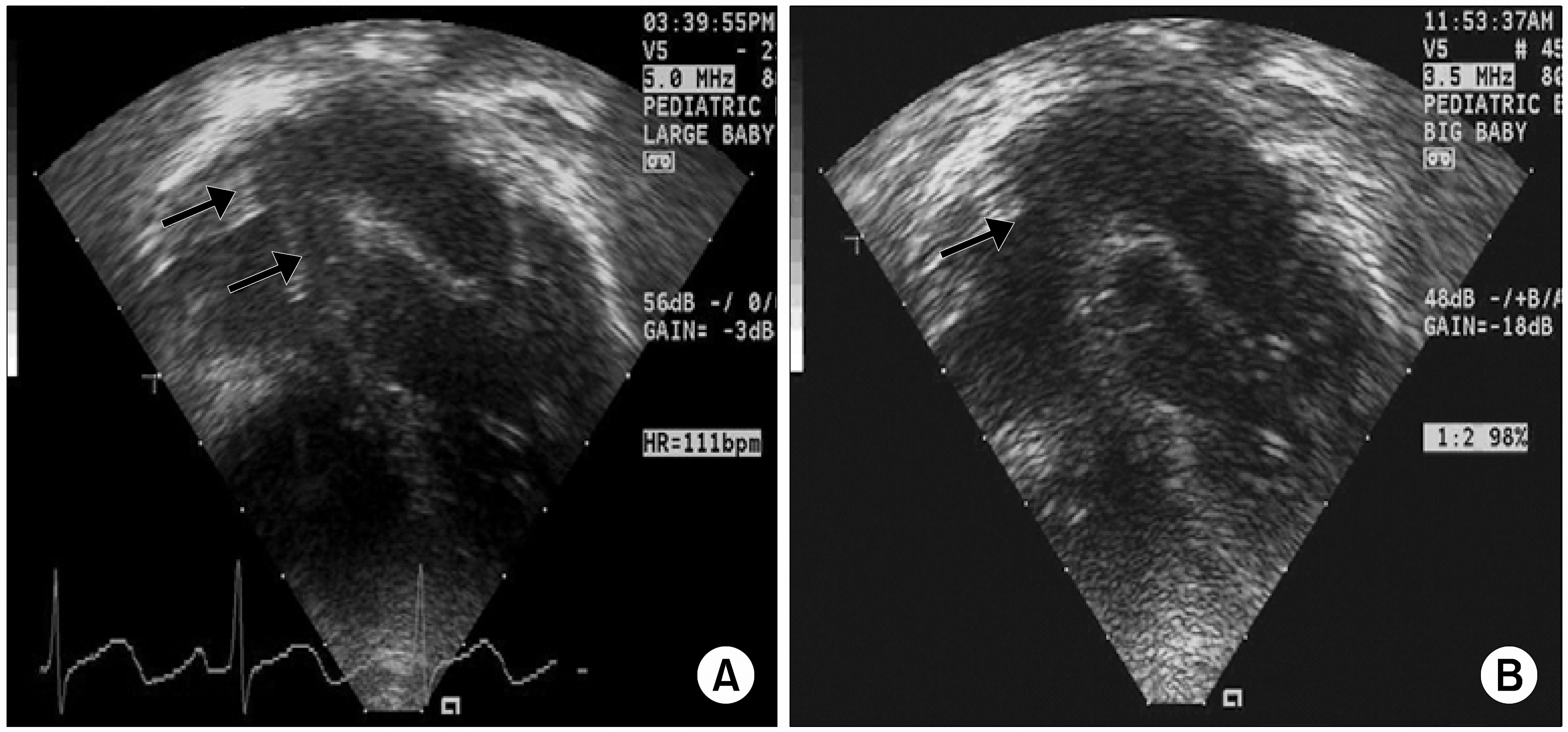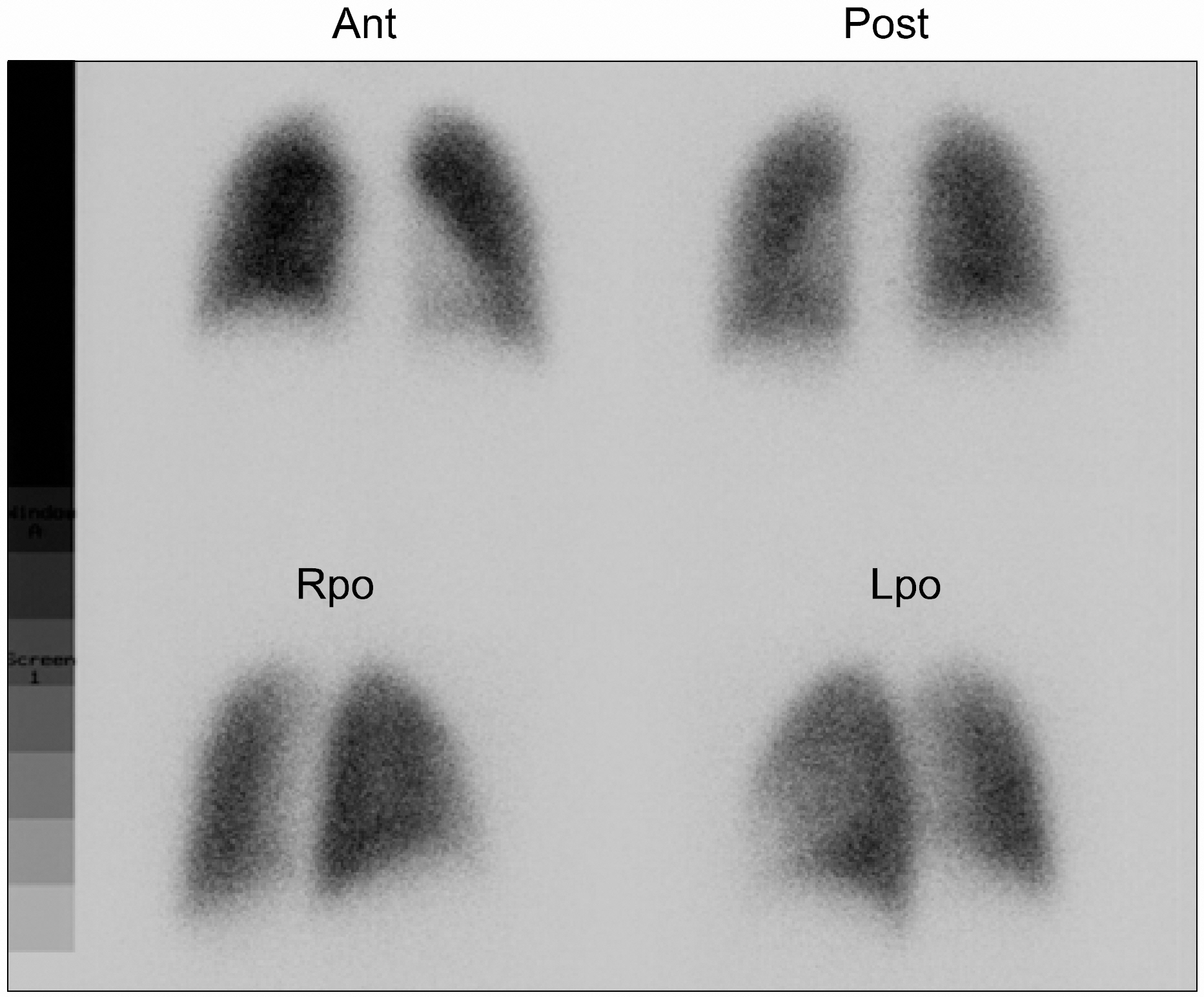Korean J Hematol.
2006 Sep;41(3):220-224. 10.5045/kjh.2006.41.3.220.
A Case of Catheter-related Thrombosis Treated with Local Low-dose Urokinase
- Affiliations
-
- 1Department of Pediatrics, Chungnam National University College of Medicine, Daejeon, Korea. sunyoung@cnuh.co.kr
- 2Department of Surgery, Chungnam National University College of Medicine, Daejeon, Korea.
- KMID: 2252306
- DOI: http://doi.org/10.5045/kjh.2006.41.3.220
Abstract
- Although indwelling central venous catheters guarantee a reliable vascular access, and are essential for the management of children undergoing anticancer chemotherapy or stem cell transplantation, these catheters may cause serious mechanical, infectious and thrombotic complications. Central venous catheter-related thrombosis is one of the most important complications that may interfere with the course of treatment. A number of regimens utilizing urokinase have been used but the optimum management of this common problem remains undetermined. We report an 8 year-old boy, who had catheter-related atrial thrombus treated successfully with urokinase. A short course treatment with the use of low-dose urokinase was feasible for the thrombolysis of catheter-related right atrial thrombus in this boy diagnosed with neuroblastoma and undergoing high-dose chemotherapy with autologous peripheral blood stem cell rescue. This treatment was not associated with bleeding.
Keyword
MeSH Terms
Figure
Reference
-
1). Fratino G., Molinari AC., Parodi S, et al. Central venous catheter-related complications in children with oncological/hematological diseases: an observational study of 418 devices. Ann Oncol. 2005. 16:648–54.
Article2). Fratino G., Mazzola C., Buffa P, et al. Mechanical complications related to indwelling central venous catheter in pediatric hematology/oncology patients. Pediatr Hematol Oncol. 2001. 18:317–24.
Article3). Cesaro S., Paris M., Corro R, et al. Successful treatment of a catheter-related right atrial thrombosis with recombinant tissue plasminogen activator and heparin. Support Care Cancer. 2002. 10:253–5.
Article4). Bona RD. Central line thrombosis in patients with cancer. Curr Opin Pulm Med. 2003. 9:362–6.
Article5). Revel-Vilk S. Central venous line-related thrombosis in children. Acta Haematol. 2006. 115:201–6.
Article6). Chan AK., Deveber G., Monagle P., Brooker LA., Massicotte PM. Venous thrombosis in children. J Thromb Heamost. 2003. 1:1443–55.
Article7). Massicotte MP., Dix D., Monagle P., Adams M., Andrew M. Central venous catheter related thrombosis in children: analysis of the Canadian Registry of Venous Thromboembolic Complications. J Pediatr. 1998. 133:770–6.
Article8). Nowak-Gottl U., Wermes C., Junker R, et al. Prospective evaluation of the thrombotic risk in children with acute lymphoblastic leukemia carrying the MT-HFR TT 677 genotype, the prothrombin G20210A variant, and further prothrombotic risk factors. Blood. 1999. 93:1595–9.9). Basford TJ., Poenaru D., Silva M. Comparison of delayed complications of central venous catheters placed surgically or radiologically in pediatric oncology patients. J Pediatr Surg. 2003. 38:788–92.
Article10). Korones DN., Buzzard CJ., Asselin BL., Harris JP. Right atrial thrombi in children with cancer and indwelling catheters. J Pediatr. 1996. 128:841–6.
Article11). Ruud E., Holmstrom H., Natvig S., Wesenberg F. Prevalence of thrombophilia and central venous catheter-associated neck vein thrombosis in children with cancer - a prospective study. Med Pediatr Oncol. 2002. 38:405–10.12). Male C., Chait P., Andrew M, et al. Central venous line-related thrombosis in children: association with central venous line location and insertion technique. Blood. 2003. 101:4273–8.
Article13). Randolph AG., Cook DJ., Gonzales CA., Andrew M. Benefit of heparin in central venous and pulmonary artery catheters: a meta-analysis of randomized controlled trials. Chest. 1998. 113:165–71.14). Savage SA., Young G., Reaman GH. Catheter-directed thrombolysis in a child with acute lymphoblastic leukemia and extensive deep vein thrombosis. Med Pediatr Oncol. 2000. 34:215–7.
Article
- Full Text Links
- Actions
-
Cited
- CITED
-
- Close
- Share
- Similar articles
-
- A Case of Successfully Treated by Local Low-dose Urokinase Infusion in Neonate with Blalock-Taussing Shunt Partially Occluded by Thrombus
- A Case of Eosinophilia Associated Massive Deep Vein Thrombosis Treated with Local Urokinase Infusion
- Thrombolytic Therapy Using Urokinase for Management of Central Venous Catheter Thrombosis
- Urokinase Treatment of Deep Artery Thrombosis in Extremely Low Birth Weight Infant
- Short-Term Catheter-Directed Thrombolysis with Low-Dose Urokinase Followed by Aspiration Thrombectomy for Treatment of Symptomatic Lower Extremity Deep Venous Thrombosis




